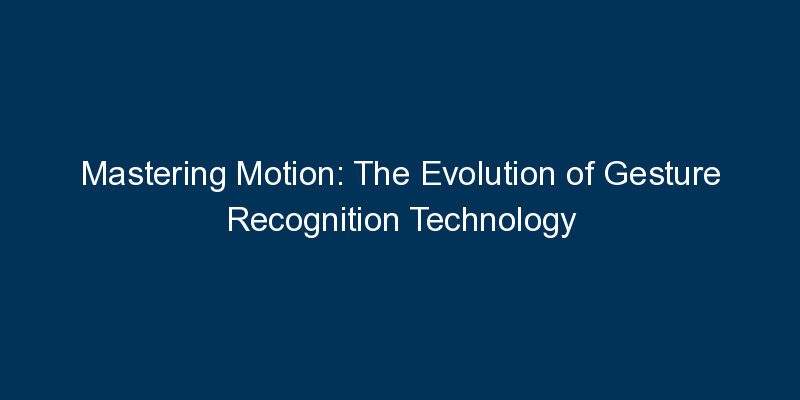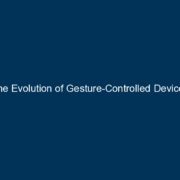Gesture recognition technology has emerged as a groundbreaking innovation, transforming the way we interact with digital devices. This blog delves into the evolution of gesture recognition, from its early stages to the sophisticated systems of today, and explores the diverse applications shaping our digital experiences.
Introduction: A Touchless Revolution
From Touchscreens to Air Gestures
Gesture recognition technology marks a significant departure from traditional input methods. As we move towards touchless interactions, the evolution of this technology has paved the way for a more intuitive and immersive way of engaging with digital interfaces.
I. The Early Days: Touchscreens and Basic Gestures
Touchscreens, Swipe Gestures, and Pinch-to-Zoom
The journey of gesture recognition began with touchscreens, introducing simple gestures like swiping and pinch-to-zoom. While these interactions were limited, they laid the foundation for a shift towards more nuanced and expressive gestures.
II. 3D Gesture Recognition: Adding Depth to Interactions
Depth-Sensing Cameras, Kinect, and Leap Motion
The advent of depth-sensing cameras, popularized by devices like Kinect and Leap Motion, brought 3D gesture recognition to the forefront. This technology enabled devices to perceive the depth and movement of gestures, opening up new possibilities for interaction in both gaming and everyday applications.
III. Gesture Recognition in Smart Devices: A Natural Interface
Smartphones, Smart TVs, and Wearables
Gesture recognition seamlessly integrated into smart devices, offering users a natural and intuitive interface. Smartphones, smart TVs, and wearables incorporated gesture controls, enhancing user experience and making interactions more fluid and user-friendly.
IV. Virtual and Augmented Reality: Immersive Gesture Experiences
VR, AR, and Hand Tracking
Gesture recognition found its stride in virtual and augmented reality environments. With the advent of hand tracking technology, users can now interact with virtual elements using natural hand gestures, creating a more immersive and engaging experience.
V. Advanced Applications: Healthcare, Automotive, and Beyond
Medical Imaging, Automotive Interfaces, and Industrial Applications
The evolution of gesture recognition extends beyond consumer electronics. In healthcare, gesture technology aids in medical imaging and surgery simulations. Automotive interfaces leverage gesture controls for safer and more convenient in-car interactions. Industrial applications benefit from hands-free control in complex environments.
VI. Challenges and Future Developments: Refining Precision and Accessibility
Precision Challenges, Accessibility Features, and AI Integration
Despite its advancements, gesture recognition faces challenges related to precision and accessibility. Ongoing research aims to address these issues, with the integration of artificial intelligence (AI) and machine learning to enhance gesture recognition algorithms and make the technology more inclusive.
Conclusion: Shaping the Future of Human-Computer Interaction
As gesture recognition technology continues to evolve, it is shaping the future of human-computer interaction. From its humble beginnings with touchscreens to the immersive experiences in virtual reality, gesture recognition has come a long way. The ongoing quest for precision and inclusivity ensures that this technology will play a pivotal role in defining how we interact with digital interfaces in the years to come.



















Comments